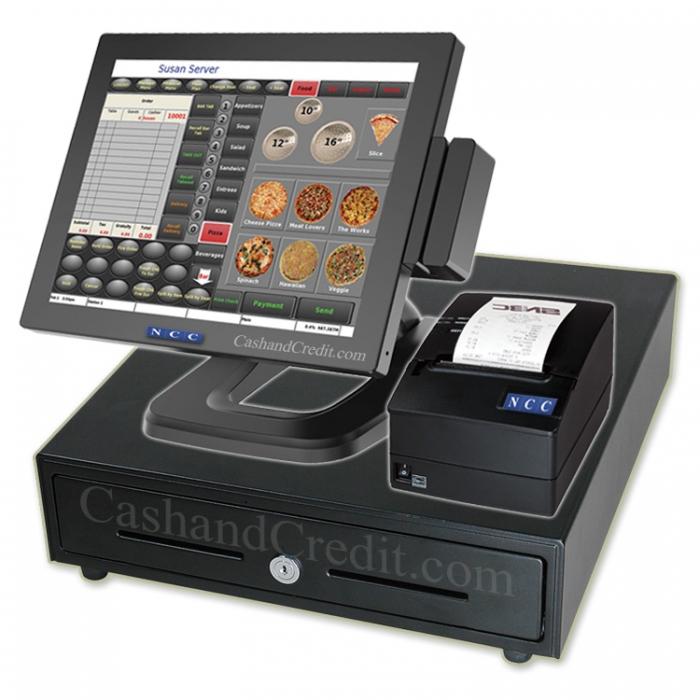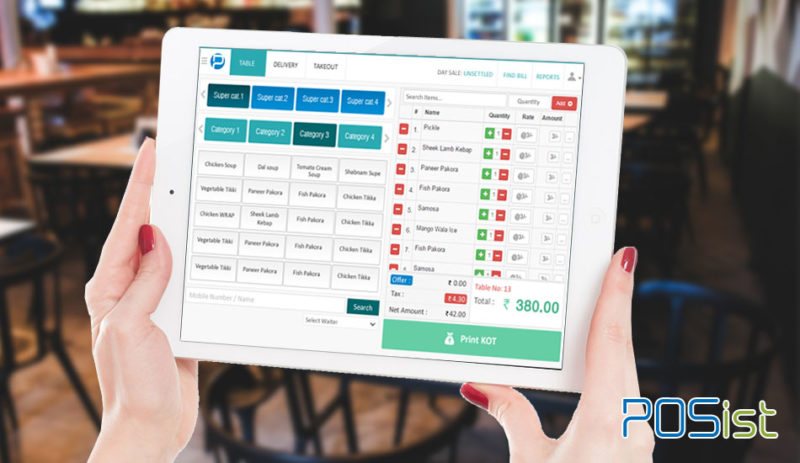How Restaurant POS Software solutions are revolutionizing dining operations
Wiki Article
How POS System Functions: A Comprehensive Overview for Entrepreneur
A POS system works as a crucial tool for modern-day companies, integrating numerous elements to enhance procedures. It includes equipment like barcode scanners and software to buy monitoring. This system not just processes deals yet likewise manages supply and evaluates customer habits. Understanding its capability can significantly affect a service's effectiveness and decision-making. What are the essential elements that add to this effectiveness? Exploring these components provides beneficial insights.Recognizing the Components of a POS System
A Factor of Sale (POS) system is composed of numerous essential elements that collaborate to promote transactions and take care of business operations. At its core, the hardware consists of gadgets such as a money register, barcode scanner, receipt printer, and settlement incurable, all vital for refining sales (Restaurant POS Software). The software program element takes care of supply, sales tracking, and consumer information, offering important insights for company decisions.Additionally, databases store transaction records and client details, guaranteeing information honesty and safety and security. Network connectivity makes it possible for real-time updates and accessibility to cloud-based solutions, boosting functional effectiveness. Interface, designed for ease of usage, enable personnel to navigate the system swiftly, reducing training time. Together, these components create a natural system that simplifies the sales process, enhances customer care, and aids in efficient monitoring of business resources. Recognizing these components is vital for entrepreneur looking for to maximize their POS systemsExactly How Sales Deals Are Processed
When a customer chooses to buy, the sales deal launches a collection of methodical actions within the POS system. First, the cashier inputs the products being purchased, which are checked with a barcode viewers or by hand gotten in. This activity recovers product details, including pricing and suitable tax obligations, from the system's database.Next, the customer exists with the total amount due. The POS system after that refines the payment, whether with cash money, charge card, or mobile settlement approaches. For electronic payments, the POS securely connects with repayment processors to license and validate the transaction.Once the payment is verified, the system generates an invoice, which can be printed or sent out digitally. This invoice functions as proof of purchase for the consumer. The deal data is videotaped in the system, making certain precise sales documents and financial tracking for the organization.Inventory Administration and Tracking
Efficient supply monitoring and tracking are essential elements of a POS system, as they guarantee that organizations maintain ideal stock degrees and lessen disparities. A durable POS system enables real-time stock updates, showing sales and returns instantly. This allows service proprietors to keep an eye on stock degrees precisely, ensuring that preferred things are readily available while avoiding overstocking of much less popular products.Additionally, advanced POS systems provide functions such as computerized stock signals and reorder suggestions, streamlining the procurement procedure. Barcoding and RFID modern technology enhance precision in tracking supply motion, reducing human error. Comprehensive reporting tools offer insights into stock turn over rates, helping businesses make informed decisions regarding purchasing and product offerings. Inevitably, reliable inventory monitoring via a POS system not just improves operational performance however also improves customer fulfillment by guaranteeing product schedule.
Assessing Consumer Information and Insights
click over here nowClient data analysis acts as an effective tool for organizations making use of a POS system. By accumulating and examining deal data, businesses can reveal important insights regarding consumer actions and preferences. This analysis allows them to identify buying fads, peak shopping times, and popular products, consequently notifying inventory choices and advertising and marketing strategies.Additionally, services can sector their customer base, enabling for customized advertising and marketing initiatives that accommodate certain demographics or purchasing practices. Recognizing consumer commitment patterns likewise assists in developing targeted promotions and rewards programs.The information amassed from a POS system can additionally reveal understandings into client feedback, enabling businesses to make informed decisions relating to item offerings and service enhancements. Inevitably, leveraging client data efficiently can enhance the overall shopping experience, foster consumer complete satisfaction, and drive income growth.
Advantages of Implementing a POS System
Implementing a POS system uses many advantages that can significantly boost business operations. To start with, it simplifies transaction processes, minimizing delay times and enhancing client fulfillment. By automating sales procedures, businesses can minimize human error and warranty exact record-keeping. Furthermore, a POS system offers valuable information analytics, see here now allowing proprietors to track sales fads and stock levels in real-time. This insight supports notified decision-making, assisting to enhance stock administration and marketing strategies.Moreover, numerous POS systems integrate with other organization tools, such as audit software, streamlining financial administration. Improved worker administration features, such as tracking hours and performance, more add to operational efficiency.Lastly, the implementation of a POS system can bring about enhanced earnings through enhanced client experiences and strategic understandings, inevitably cultivating organization growth and sustainability.
Regularly Asked Inquiries
What Kinds Of Businesses Can Gain From a POS System?

Just how Much Does a POS System Generally Expense?
The price of a POS system commonly varies from a couple of hundred to a number of thousand bucks, relying on features, hardware, and software - Restaurant POS Software. Organizations have to take into consideration visit ongoing costs for maintenance, assistance, and transaction handling when budgeting
Can I Integrate a POS System With Existing Software?
Integrating a POS system with existing software is frequently possible. Several systems offer APIs or integrated compatibility features, permitting organizations to improve operations and enhance performance by linking numerous software applications efficiently.What Training Is Needed for Staff to Use a POS System?
Educating for staff to utilize a POS system generally includes understanding software functionalities, refining transactions, handling inventory, and dealing with consumer communications - Restaurant POS Software. Practical demonstrations and hands-on method sessions enhance proficiency and self-confidence being used the system efficientlyWhat Takes place if the Net Drops While Making Use Of a POS System?
If the web decreases during POS system usage, transactions may be interrupted. Lots of systems offer offline abilities, permitting standard procedures to continue, however complete functionality, consisting of real-time supply updates, will be restricted.Report this wiki page